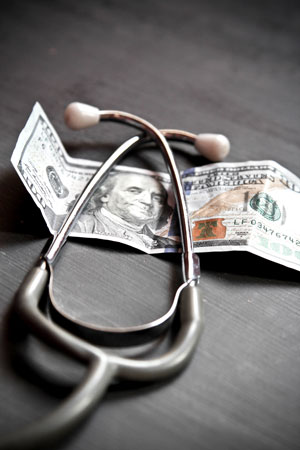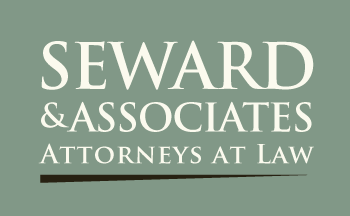The world of bankruptcy is often misunderstood.
The vast majority of Americans have a negative perception of the concept, and even cringe or recoil when they hear the word. Many feel that they have some type of duty to fully repay their creditors at all costs, even when facing a severe financial hardship. Debtors in this type of dire situation must put their own needs before that of the creditor and consider all possible options. Often a Chapter 13 bankruptcy is a viable, noble and effective option.
A Chapter 13 bankruptcy petition is often referred to as a wage-earner’s plan, as it is only available to individuals who are currently earning an income and can show an ability to repay most of their debts in a three or five year plan. Individuals who qualify must have less than $360,475.00 in unsecured debt (debts like credit cards and medical bills) and less than $1,081,400.00 in secured debt (debts like a mortgage or car payment). Secured debts are those debts that if you default, the creditor can take a piece of tangible property from you in repayment of the debt. Debtors who have not discharged debt in a Chapter 13 bankruptcy within the last two years, or in a Chapter 7 bankruptcy within the last four years, are eligible for a Chapter 13 discharge. A debtor may still file a Chapter 13 if they previously filed in the past four years and received a discharge, but they will NOT get a discharge on the current Chapter 13.
How does the Chapter 13 proceed?
First, the debtor and his attorney meet to prepare the petition. The petition must include all debts, obligations, and creditors of the debtor. Prior to filing, the debtor must take a credit counseling course, which is offered online. Once the petition is filed and all filing fees are paid, a bankruptcy judge reviews the petition. If the petition is approved, the debtor will make his first payment to the trustee within the first 30 days of filing. The trustee then distributes that payment to all of the creditors of the debtor, in a proportional manner. Secured creditors are paid first, and then all unsecured creditors are paid in proportion to their individual claim. This type of payment plan is kept in place for three or five years, or until the debtor decides to withdraw the petition. If the plan is completed, a discharge order will be granted to the debtor.
So what can a Chapter 13 do for a debtor?
- Stop a home foreclosure. If facing a foreclosure on a home and the debtor files a Chapter 13 petition, the foreclosure is immediately stopped. The foreclosure cannot proceed because an automatic stay is created by the filing of the petition, which attaches to all assets of the debtor. Proceeding with the foreclosure would be in direct violation of the automatic stay.
- Stop harassing creditor calls. Once the petition is filed, all creditors are given notice of the bankruptcy filing and the automatic stay that has been put in place. Creditors must halt all collection activities after the automatic stay is in place or seek relief from the stay order from the bankruptcy court. Failure to do so would be a violation of the Fair Debt Collection Practices Act.
- Remove a wage garnishment. As part of the automatic stay, all collection actions, including wage garnishments, are stopped once the Chapter 13 plan is put into place.
- Eliminate credit card debt, or other unsecured debt. If a debtor is earning a living wage but has unsecured debts that are no longer manageable, a Chapter 13 petition would allow the debtor to consolidate all debts into one single payment. Any amount of unsecured debt that is in excess of the approved plan payments is discharged.
- Discharge a second mortgage. If a debtor has a second mortgage on his home, and the value of the home is less than the debt owed on his first mortgage, then the second mortgage is treated as unsecured. As an unsecured debt, the second mortgage holder will only receive a fraction of what was originally owed, or perhaps nothing at all.
- Keep your assets. The most beneficial aspect of a Chapter 13 is that the debtor gets to keep all assets and reorganize all debts. It is a chance to get caught up on all past debts without going through the heartache of a Chapter 7 liquidation.
- Rebuild your credit. Sure, the debtor’s credit score will take a hit after filing bankruptcy, but as the debtor makes consistent plan payments to the trustee throughout the life of the plan, his score will rise over time.
- Catch up on the mortgage payments. If a debtor has fallen behind on a number of mortgage payments, those mortgage arrears can be factored into the plan payments and spread out over the course of three or five years.
- Have a driver’s license reinstated if suspended for too many traffic tickets. Chapter 13 provides a repayment plan for traffic tickets and court fines that are keeping a debtor’s drivers license suspended. After filing the petition, a debtor can take that documentation to a Washington State Department of Licensing office and have his license immediately reinstated.
A Washington Chapter 13 bankruptcy can be a very powerful tool for consolidating debts into one affordable monthly payment while discharging unsecured debts such as credit card bills, medical bills, personal loans, lawsuits, judgments, and almost all other debts not secured by collateral. But, Chapter 13 bankruptcies are tough. The petition is often difficult to draft, and is a tedious process to work through. It is not advised that a debtor attempt to draft and file a petition on his own. It is worth the time and money to consult with a lawyer who has experience dealing with Chapter 13 and the bankruptcy courts. Stop fighting a losing battle with debt and seek help. The bankruptcy courts were established to give debtors a way out and way to start their life again. It is time to utilize that option.
Attorney Jared Bellum is a contributing author to this blog.
 Health insurance does not necessarily translate into affordable healthcare.
Health insurance does not necessarily translate into affordable healthcare.
 Attorneys on a mission – Richard Seward and James Dickmeyer tell Seattle’s top talk radio host Dr. Pat Baccili about what to do if you’ve lost your home and your job. Listen to them address the emotional toll of financial debt, the most common debt mistakes people make and the importance of finding experts to help.
Attorneys on a mission – Richard Seward and James Dickmeyer tell Seattle’s top talk radio host Dr. Pat Baccili about what to do if you’ve lost your home and your job. Listen to them address the emotional toll of financial debt, the most common debt mistakes people make and the importance of finding experts to help.